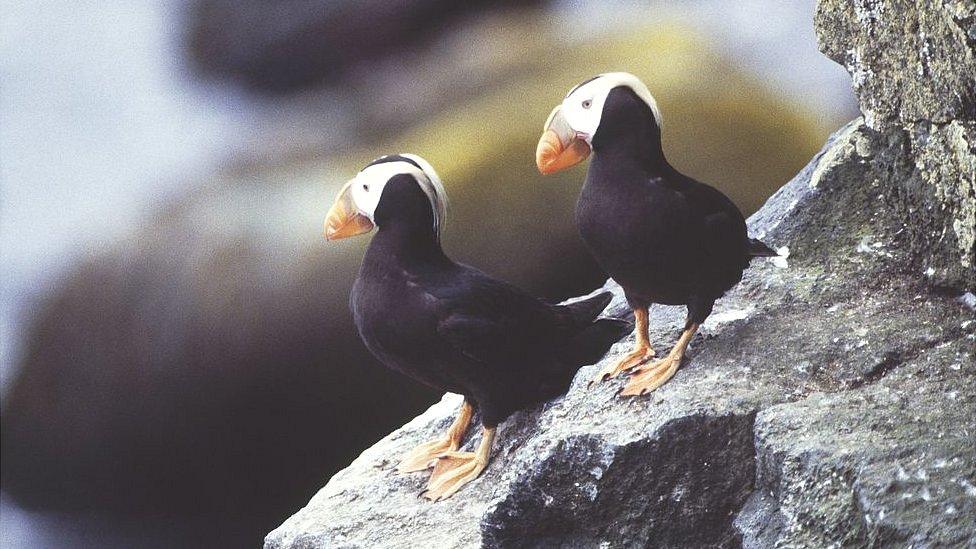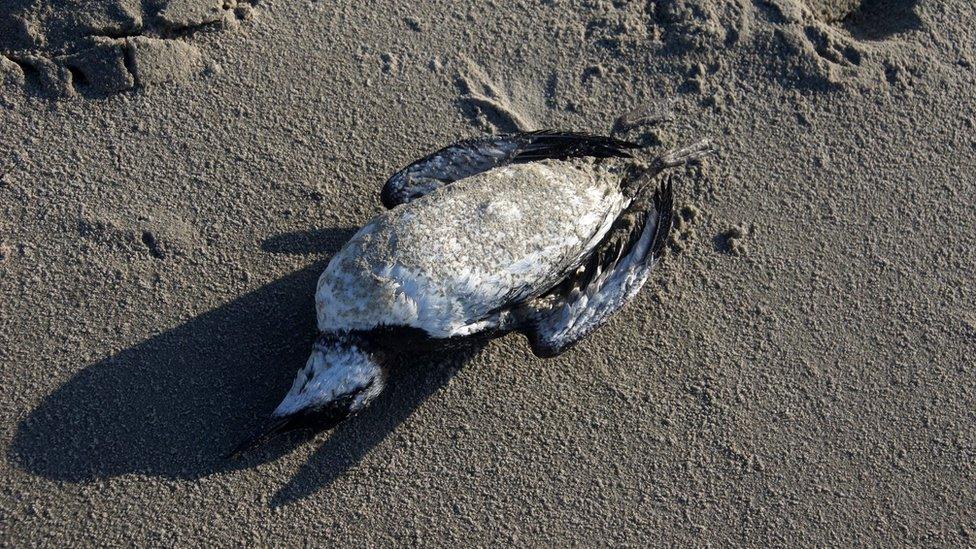Pacific 'blob' heatwave feared to have killed a million birds
- Published

Tens of thousands of birds were found dead in the west of the US
Tens of thousands of seabirds found dead on the west coast of the US in 2015-16 were probably killed by an unprecedented heatwave, scientists say.
Around 62,000 common murres washed up on the coast of the Pacific Ocean but up to a million birds are thought to have died.
The scientists said that warmer sea waters, known as the "blob", led to a shortage of the fish the birds feed on.
Other fish, birds and mammals also died in the same period.
The study, published on Wednesday by the PLOS One scientific journal, found that the seabirds probably starved to death, external due to a 1,000-mile body of warmer water that affected the north-eastern Pacific between 2013 and 2016.
The higher temperatures impacted their food supply, with diminishing supplies of plankton leading to a both a drop in the population of the smaller fish eaten by the birds and increased competition from other predators.
More than three-quarters of the dead murres were found in the Gulf of Alaska, but the actual number is likely to be around one million as only a small number of birds that die at sea are normally washed ashore.
The scientists said that mass deaths of murres, also known as common guillemots, happen sporadically, but described the scale of the incident in 2015-16 as "unprecedented and astonishing".
The UN's climate science panel last year found that marine heatwaves are likely to become more frequent, external due to climate change.
- Published30 May 2019

- Published6 February 2019
